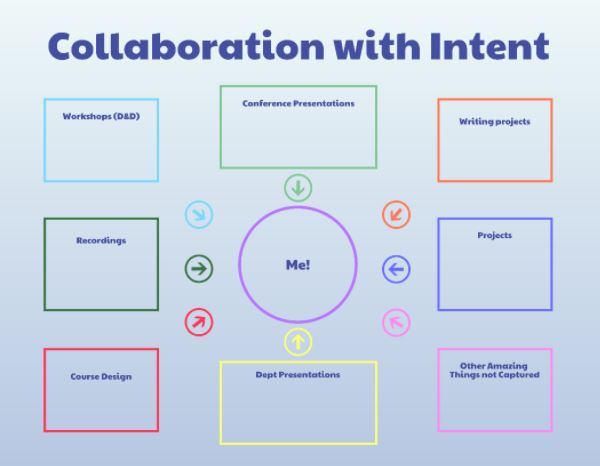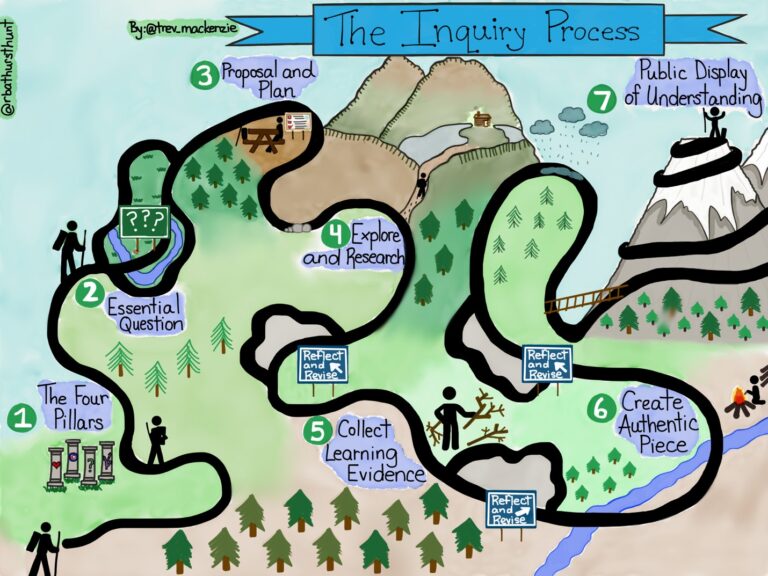A Foundational Path to Initiate Any Course Design: Constructive Alignment, Backwards Design & SAMR
When seeking to expand your theoretical inspiration for teaching, it is sometimes hard to know where to start; and whether a theory you are exploring is applicable to the design in general, or better suited to specific stages in the selection, creation or delivery of content. This is something every instructor must decide for themselves according to their own unique teaching style, but there are some widely used theories to help plot an initial path from the Course Learning Outcomes (CLOs) to make initial decisions on content, assessment and interaction. This blog shows how three foundational theories overlap and inter-connect to clarify a coherent outline, for further refinement.
Before delving into each stage more specifically, let us look at this pathway, as a whole. We start with Constructive Alignment (CA). It focuses on using the course learning outcomes (CLOs) in official course outlines to frame possible choices in course design; thus, allowing the instructor a defined space within which to exercise their unique style. CA overlaps and leads into the next theory, Backwards Design (BD). It, too, begins with CLOs, but more specifically at what successful fulfillment of those CLOs looks like, and then working backwards through your teaching to inform design choices that provide content and learning activities to prepare for students for eventual assessment. Finally, SAMR is a theory that helps us to understand how technology can manifest these initial plans, by envisioning tools and/or environments that enable alignment with CLOs within the instructor’s technological skill level. Now, let’s look at the stages of this path in more detail.
First, in any design process, a powerful way to encourage creativity and experimentation is to have clearly defined goals. Since CA begins by defining limits through the official CLOs, instructors begin with a clear frame to apply to content, delivery and assessment choice; acting as an aligning guide when envisioning design application in the ‘backwards’ phase. To build this clarifying comfort, instructors should first visit KPU’s Course Outline Library to examine that course’s LOs. These have been created through faculty and institutional committees, and government policy, so by aligning with them, you are connecting to not only the course, but its place in a program, KPU and greater society. In a gardening analogy, clear alignment to CLOs means you have gathered rich soil from which a wide variety of plants will grow; thus, making it easier to define and empower your personal style.
It is in this process of envisioning the possibilities of CLOs that Backwards Design coalesces with Constructive Alignment by starting with the ending. What does the successful attainment of CLOs look like? How are they best represented? Just like any good storyteller, when the ending is clear, time and effort is spent articulating the journey there. A great element to apply BD to is your assessment schemes. With visions of attainment as your guide, you can begin to plot the summative assessment points, which then informs your formative pathways. Essentially, BD brings CA to life, and means instructors need to envision this backwards story for more than one learner archetype. It is here within the framework of theory that instructors can apply their educational and practical experience to develop teaching and learning that fulfills institutional obligations, shaped through the individuality of the instructor.
Finally, SAMR, (Substitution – Augmentation – Modification – Redefinition) is a theory that helps reveal the technological skill level of instructors in relation to facilitating CLOs. It informs on software choice by revealing the strengths and weaknesses instructors have in relation to the tools they will use to create and facilitate the course. For example, at KPU, SAMR would be useful to explore one’s abilities in Moodle, in relation to how the environment and tools are used for content delivery, communication and grading; as well as more specifically to media creation skills, like images, video, etc. Once you have applied Constructive Alignment, and further detailed your vision using Backwards Design, SAMR is excellent to help evaluate and choose the best housing and delivery.
To help this application, the four stages of SAMR are divided into two sections. The first is ‘Enhancement’, and this means you are at a level where you use technology in your teaching to provide small improvements in the way a course is taught; for example, using PDFs in place of paper hand-outs is an enhancement because access is much easier, and multi-media elements can be added to a PDF. The second is ‘Transformation’, and this means the instructor has technology skills that allow them to create and teach in ways not imaginable before the skilled application of software, devices, etc.
A great example of ‘transformation’ is from a HyFlex workshop I attended where the instructor had students make short bios with a picture but placed them in the Glossary Block in Moodle and attached it to the course page on a random setting. As such, whenever a different login occurred, a different class member would be shown. The instructor said it created great class cohesion and improved communication in activities as everyone had met all of their classmates. It is transformational because non-software-based activities or environments do not allow such an arrangement. At the very least, SAMR is an excellent tool to help focus one’s own professional development by understanding where you are on the spectrum, in relation to the technology available at KPU.
In conclusion, by using these three theories, as a path or individually, you are sure to get an effective start from which to refine further. Constructive Alignment ensures the compact between what the school teaches and what the student learns is manifested in a manner that is satisfying and reflective of the instructor’s uniqueness. Backwards Design further details this alignment, often beginning with summative assessments; and finally, SAMR helps an instructor understand their technological skill level; and thus, allows an informed position to articulate and manifest alignment.
Chris Ryan
Chris works to help instructors clarify their learning outcomes and the best path(s) to these outcomes. He works by applying time-proven instructional design theory to articulate a variety of solutions to effectively mix KPU technology with instructor experience. He helps by providing one-to-one consultations, workshops and any other useful methods to help maintain and improve KPU’s academic excellence. Chris loves to learn and deepen his knowledge of real-world and online education to not just transfer curriculum through pedagogical principles, but enliven it with creative applications of the ever-growing suite of learning tools.






